#constructivist poster
Explore tagged Tumblr posts
Text

Vladimir & Georgii Stenberg
The Man from the Forest
1928
#modern art#constructivism#constructivists#constructivist poster#georgii stenberg#vladimir stenberg#stenberg brothers#movie poster#russian avant garde#avant garde#constructivist graphic art#russia#1920s russia#1920s art#1920s cinema#1920s aesthetic#1920s style#1920s movies#movie art#poster design#commercial art#man from the forest
31 notes
·
View notes
Text
[has access to zlibrary, knows how to torrent, has a small free library near her, at least 5 unread books, and access to an online American library]: hm I should get a card for my local library
#to be fair neighter of those places have like books on constructivist posters and hungarian anarchism but you know what does..#the local library...
9 notes
·
View notes
Text
Aleksey Gan (1923)

"Hooray for demonstrating everyday life!" - a book for cinema makers written and designed by Aleksey Gan (1923)
#Aleksey Gan#constructivist#constructivism#russian avant garde#constructivist art#poster art#propaganda art#agitprop#modern art#art history#aesthetictumblr#tumblraesthetic#tumblrpic#tumblrpictures#tumblr art#tumblrstyle#artists on tumblr
164 notes
·
View notes
Text
My brain is picturing a poster that’s like, Ripley in her cloak and gloves hanging desperately onto W.D. and the two of them swinging through the air in like a constructivist style and it says “Let’s Go Lesbians!” beneath it.
Do you see the vision???
Man W.D. is down BAD for Ripley I love her so much.
27 notes
·
View notes
Text
samia halaby is a palestinian american artist, activist, educator and scholar. she was born in al quds/jerusalem in 1936 during the british mandate, and her family was displaced from yafa/jaffa in the nakba in 1948¹. she is a famed abstract artist² and leftist/marxist palestinian liberation activist who has recently been silenced by her alma mater indiana university³. she has documented palestinian art in her scholarly work, including in liberation art of palestine⁴.

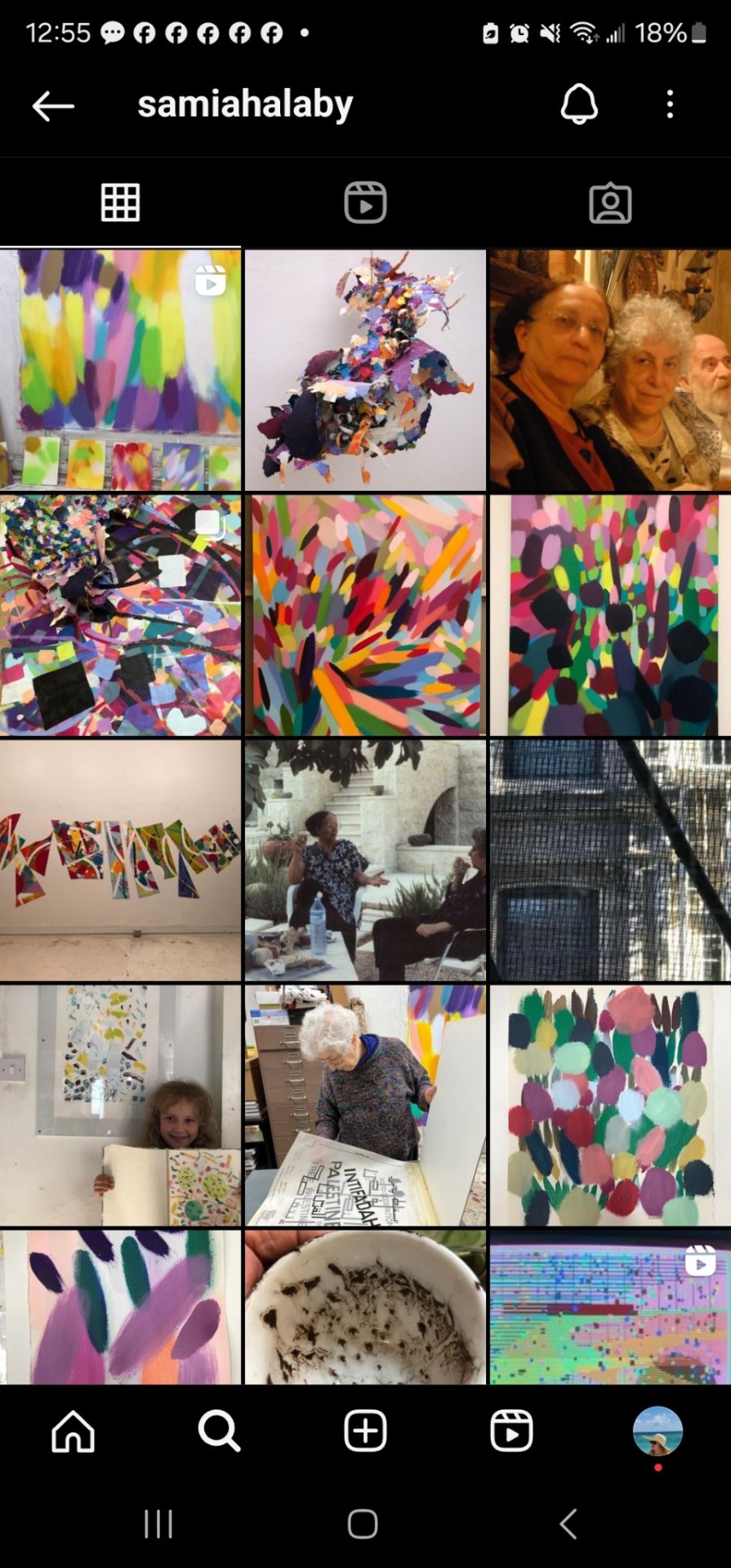
🍉🍉🍉🍉🍉🍉🍉🍉🍉🍉🍉🍉🍉🍉🍉🍉🍉🍉
in her own words, how art is a "symptom" of society⁵:
You know, I can make a banner and a poster. Does that change what Rockefeller is going to decide to do with this money next year? No. Does that stop him from giving $4 billion to Israel? No matter how hard I try, or how often I walk the streets and demonstrate. But art is a flowering of society. It’s not the other way around.
The Impressionists are really amazing. Take note that they are popular and beloved by everybody. Which is not artificial – people really admire them, not because they’re sweet and fruity, but because they recognize in them the first step away from praising the ruling class, to praising the middle class and even the worker. By the time you get to some of the French Cubists, like [Fernand] Léger and the early Constructivists, you see clear praise of the worker and a growing focus on the general and on abstraction. To me, abstraction is an efflorescence of working class revolution.
reblog with your favorite of samia's works is!
my favorite is twin sine waves, made in 1972.
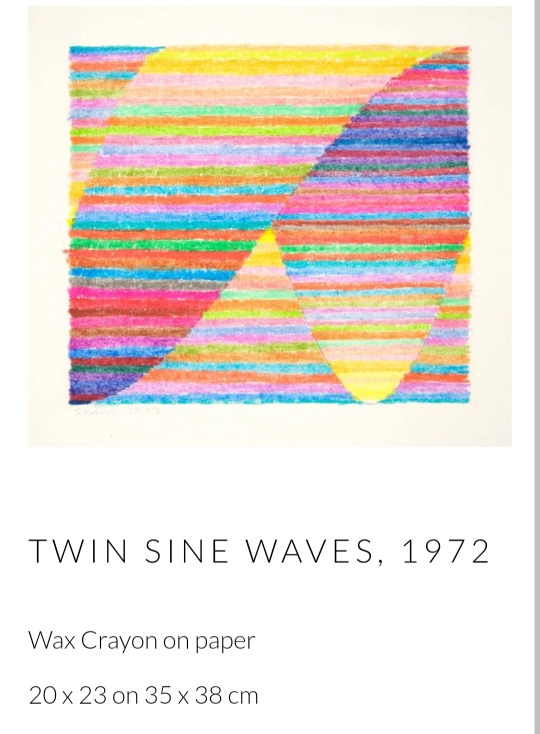
sources:
samia halaby's official website
palestine museum page on samia
democracy now! interview with samia
jadaliyya interview with samia
mondoweiss interview with samia
ayyam gallery
#free palestine#palestine#palestinian artist#palestinian art#palestinian artists#samia halaby#artists#art#jerusalem
68 notes
·
View notes
Text


FEMALE HEAD: Roman, Marble, Unknown provenance From the Rimini area, Emilia-Romagna Region ["La Rimini di Cesare" Exhibit] 1-2 AD. Interesting - is it just me seeing some reference to the Constructivist posters in this particular museum setting? "Caesar-Age Style: Crazy Times Forever" - how do you like this ?.. 😵💫
Museo della Città, Rimini | MDCR [Ground Fl., Sala 11, "La Rimini di Cesare"]
Web : https://www.museicomunalirimini.it/en
FB : https://www.facebook.com/RiminiMusei
IG : @ museodellacittarimini | @ riminimusei
X : @ museirimini
MDCR | Michael Svetbird phs©msp | 06|07|24 6400X4200 600 [I., II.] The photographed object is collection item of MDCR [Non-commercial fair use | No AI | Author rights apply | Sorry for the watermarks]
📸 Part of the "HEADS.Sculpture" MSP Online Photo-gallery:
👉 D-ART: https://www.deviantart.com/svetbird1234/gallery/78520831/heads-sculpture
👉 FB Album: https://www.facebook.com/media/set/?set=a.1400262423675664&type=3
.
#rimini#emilia-romagna#archaeological museum#museo archeologico#art museum#history museum#roman#sculpture#ancient rome#ancient sculpture#ancient art#archaeology#antiquity#art history#ancient#museum#museology#heritage#antiquities#classical#history#culture#heads#constructivism#photo gallery#sculpture photography#museum photography#archaeology photography#art photography#michaelsvetbird
10 notes
·
View notes
Text
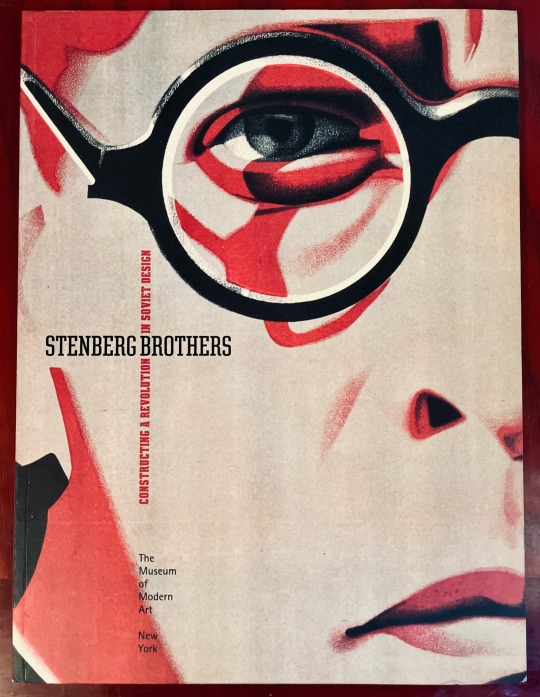

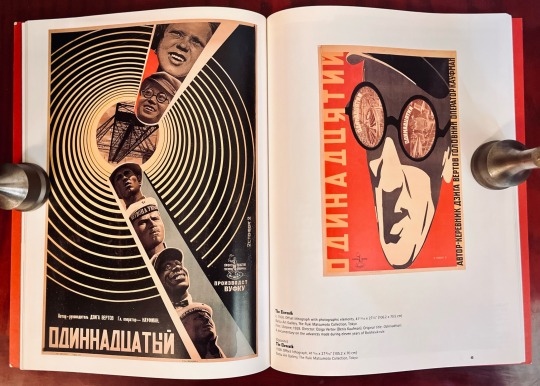
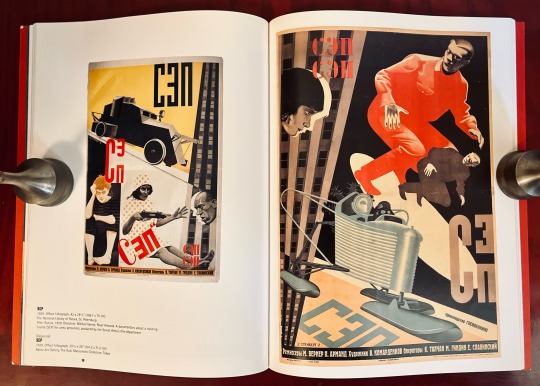

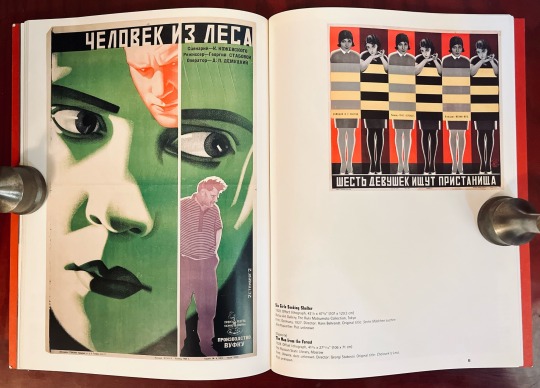
Book 502
Stenberg Brothers: Constructing a Revolution in Soviet Design
Christopher Mount
The Museum of Modern Art, New York 1997
The Stenberg Brothers, Vladimir (1899–1982) and Georgii (1900–1933), are perhaps best known for designing posters for Sergei Eisenstein’s films. Their peak is an incredible body of work between 1924 and 1933 (the year Georgii tragically died in a motorcycle accident), that coincided with a revolutionary political and artistic period in Moscow. Working primarily in the constructivist style, the brothers’ visual language is stunning and, even by today’s standards, still seems radical.
Utilizing unusual color combinations, bold geometric compositions, modern typographical experiments, and Dadaist collage elements, the Stenbergs’ created some of the most graphically thrilling work of the 20th century. Considering that most of their graphic work was printed on cheap throwaway paper, it is in fact incredibly fortunate that so much of it has survived.
This book, published to accompany an exhibition at NY’s MoMA in 1997, is an excellent survey of the brothers’ work and a thrilling look into an incredibly influential era of Soviet graphic design.
#bookshelf#library#personal collection#personal library#books#bibliophile#book lover#illustrated book#booklr#graphic design
11 notes
·
View notes
Text
An ‘Ism’ Overview - Suprematism vs. Constructivism
In the early 20th century, the Russian art scene experienced a significant transformation with the emergence of two prominent art movements, Suprematism and Constructivism. While these movements shared some similarities, they were fundamentally distinct in their artistic goals and techniques. In this essay, I shall compare and contrast the key characteristics of Suprematism and Constructivism, elucidating the ways in which they diverge from and intersect with one another.
Suprematism, which emerged in 1915, was a radical artistic movement that sought to reject representational art in favour of pure abstraction. Led by Kazimir Malevich, Suprematist artists aimed to create a new form of art that was devoid of any references to the external world. Instead, their works were comprised of simple geometric shapes and bold colours arranged in a non-representational manner. The ultimate goal of Suprematism was to create a sense of pure visual sensation that transcended the physical world.
In contrast, Constructivism, which emerged in the 1920s, was an art movement that aimed to integrate art into everyday life. Led by artists such as Alexander Rodchenko and Varvara Stepanova, Constructivism sought to create a new art form that was functional and useful to society. The Constructivists rejected the traditional notion of art as something to be admired in a museum or gallery and instead sought to create objects that could be used in everyday life, such as furniture, clothing, and posters. For Constructivists, art was a tool for social and political change.
While these two movements may seem very different, they both shared a commitment to abstraction and the rejection of traditional artistic conventions. Both Suprematism and Constructivism sought to break down the barriers between art and life, albeit in different ways. Suprematists rejected the idea of art as a reflection of the physical world, while Constructivists sought to use art to transform the physical world.
However, there were also fundamental differences between the two movements. Suprematism was primarily concerned with the creation of a new visual language that transcended the physical world, while Constructivism sought to use art as a means to transform society. Additionally, while Suprematism was primarily concerned with the visual aspects of art, Constructivism emphasized the functional aspects of art and sought to create objects that could be used in everyday life.
In conclusion, while Suprematism and Constructivism were both revolutionary movements that rejected traditional artistic conventions, they differed fundamentally in their artistic goals and techniques. Suprematism aimed to create a new form of art that was devoid of any references to the external world, while Constructivism sought to use art as a means of transforming society. Despite these differences, both movements shared a commitment to abstraction and the belief that art could be a tool for social and political change.
5 notes
·
View notes
Text

Based off a soviet constructivist poster by Aleksandr Ródchenko! I really like constructivist graphic design, I think it's amazingly done. It's supposed to be a cat asking for salmon but I had to use a translator since mama doesn't remember how to speak Russian. Tell me if I messed up with the language!
This is the poster btw

7 notes
·
View notes
Text
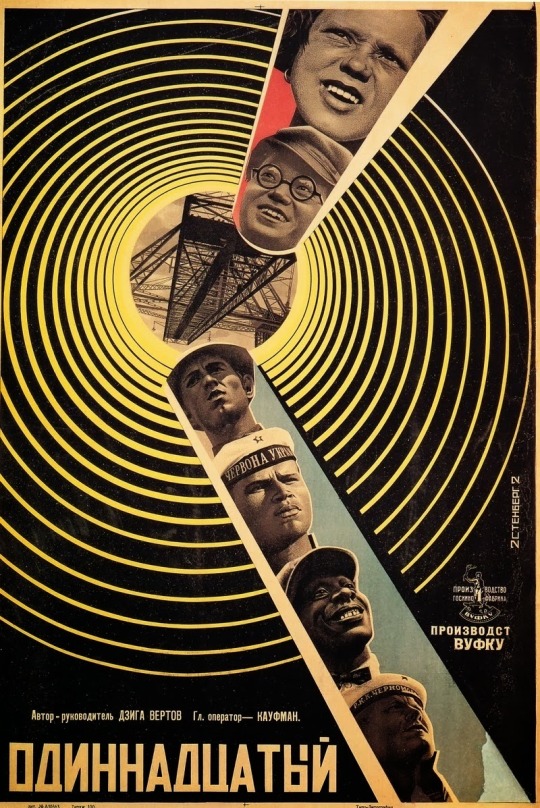
Georgii & Vladimir Stenberg
The Eleventh Year (directed by Dziga Vertov)
1928
#modern art#georgii stenberg#vladimir stenberg#stenberg brothers#constructivist movie poster#constructivist poster#constructivist graphic art#constructivists#constructivist art#constructivism#russian cinema#russian movies#russian avant garde#avant garde#art history#1920s art#1920s style#1920s russia#1920s movies#russian art#the eleventh year
11 notes
·
View notes
Text
Catresponse
In this Constructivist poster from 1925, the woman calling is Lili Brik, wife of the Formalist literary theorist Osip Brik and mistress of the poet Alexander Mayakovsky. A merely literal translation, the words without the jazz, is, “Leningrad State Publisher BOOKS for all branches of knowledge.” The photography and the graphic design are by Alexander Rodchenko, whose AR monogram appears in the…

View On WordPress
0 notes
Text
Lyudmila Mayakovskaya's flat in Lower Presnya, Moscow
Lyudmila Mayakovskaya was Vladimir Mayakovsky's older sister. I've never known about her, but she was actually a very interesting person. She graduated from the Stroganovsky Art Workshop and in 1910 came to work as an aerography artist at the Tryohkgornaya Textile Factory, soon becoming the head of the aerography department. For many years she was the only female head of department among a hundred of men.
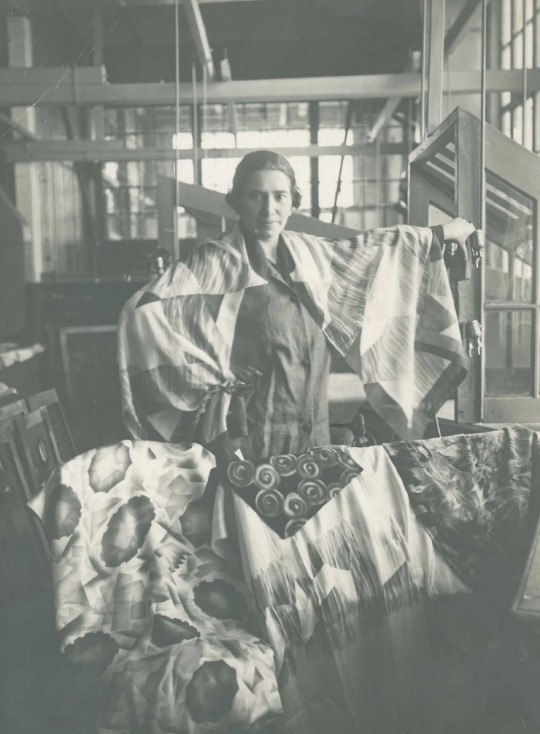
Almost since the first day Lyudmila started teaching other workers her process. In 1920 she joined the team of VHUTEMAS art academy and worked there until 1948. In her autobiography she wrote, "My students work in every textile factory of the USSR."
Thanks to her work and position, in 1927 she was able to buy her own 3-room flat in Lower Presnya where she lived with her sister and mother. Lyudmila was always involved with Vladimir's work as well, for example helping him make stencil copies of posters that he was creating. After his untimely death she was a vocal supporter of him and helped organize a museum. She donated the Presnya flat with all furniture and belongings to the museum after she passed away.
The flat is located in a very typical, no-nonsense 1920s house. For more than 50 years it was used as a museum office and only opened to the public in 2019. Althouth it's Lyudmila's flat, much of the exposition is understandably dedicated to Vladimir.

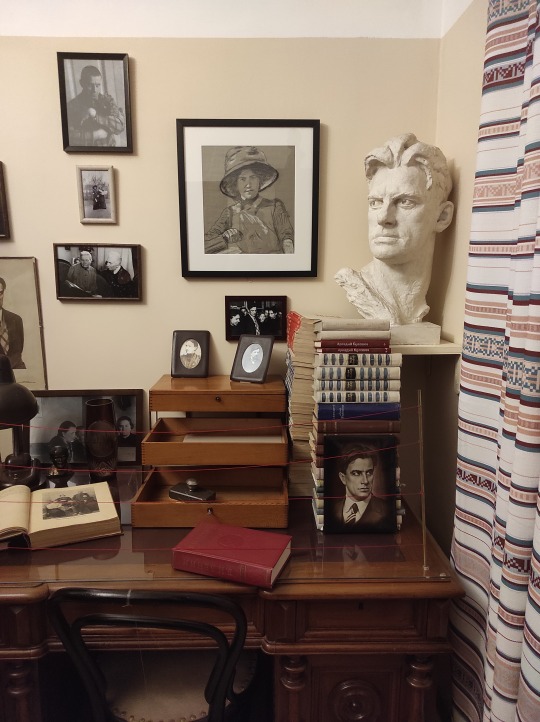

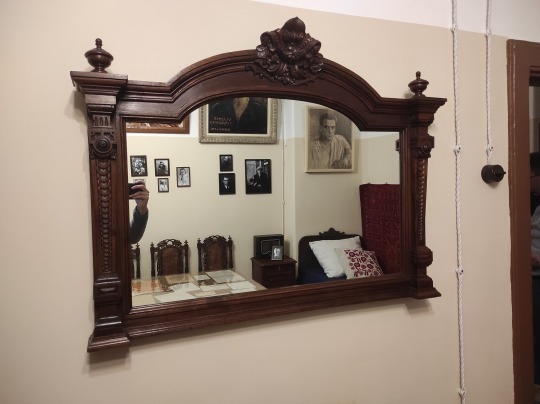
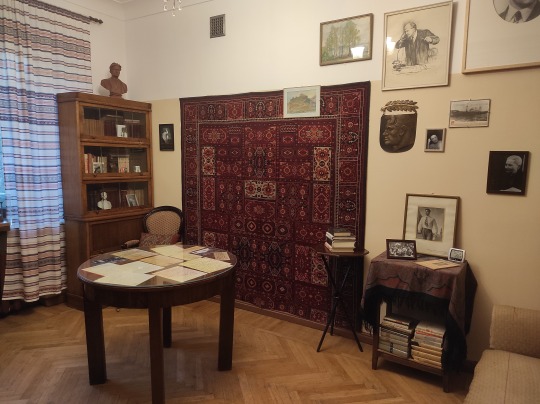
Vladimir paid for phone line being installed in the flat. This is the original phone from 1927.

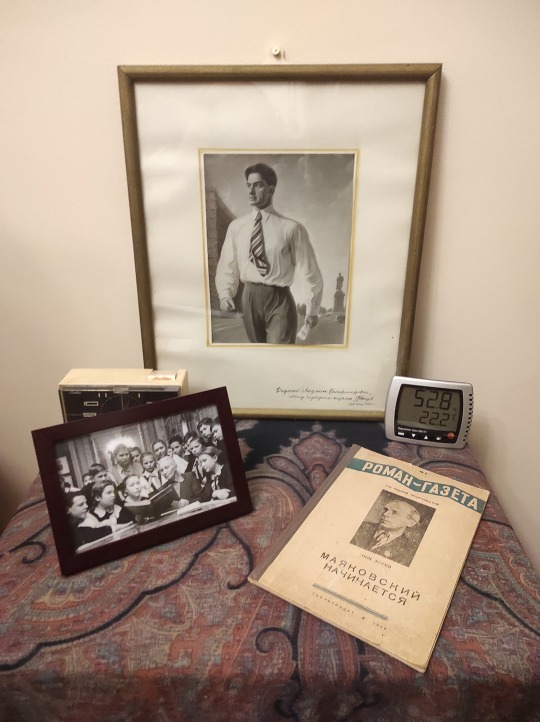
I wish more of the original items were saved, especially the kitchen and the bathroom. Still, it was very interesting to see a constructivist era flat with its unusual floor plan (at least two doors in every room for air flow), ice pantry, air ducts, turn-to-ring doorbell etc.
Part one - Architecture | Part two
102 notes
·
View notes
Text
Research: History of Poster Design
1919 - 1938: Between the World Wars: Modernism & Art Deco
After World War I, Art Nouveau's organic inspiration became irrelevant in an increasingly industrial society; the modern art movements Cubism, Futurism, Expressionism, and Dadaism became chief influences. At the same time, the first graphic design courses were launched in France, Germany and Switzerland, a key moment in the transition from illustration to graphic design in advertising.
This shift was quickly felt in the Soviet Union, where Constructivist art arose to help create the new revolutionary, technological society. The Constructivists developed an "agitational" style of poster composition, marked by strong diagonals, photomontage, and jarring color.
By the mid-Twenties, these often disparate modernist approaches would coalesce into a major new international decorative movement called Art Deco. In this machine age style, power and speed became the primary themes. Shapes were simplified and streamlined, and curved typefaces were replaced by sleek, angular ones that would reflect the jazz age.


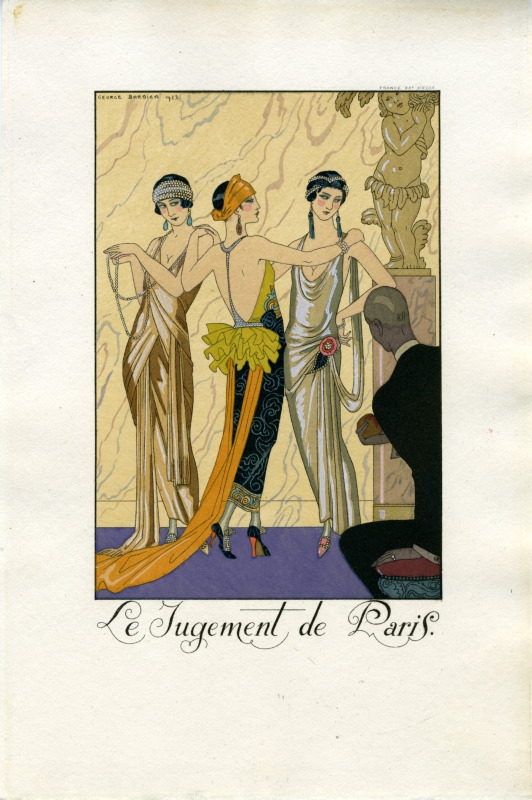
0 notes
Text
Survey of Graphic Design Styles (Poster Specific)
Writing out all the different styles to understand the breadth of my knowledge of the graphic design scenes thus far.
Psychedelic: Often characterized by fried color palletes, nearly illegible type and subjects that seem like they were the ideas of incredibly high people. What i love about psychedelic posters is that they seem like they are aiming to be the most of something.
Relics from an Alternate Future - Rudnick / Eric Hu. Both have similar styles. Not even necessarily internet coded but certainly involve visions of the future. Typography that feels anywhere from ancient to hypermodern. Illustrations that feel futuristic. Whether through the photo treatment or through the style of imagery. Eric Hu’s for example being 3D claymation feels like it has not been done before. I think that’s one of the best things that they did. They made / make things that attempt to embody the current moment. Things that have not been made before. Little to none of my stuff thus far has done that. I need to work toward that. That will be my tomorrow. How do i modernize / update myself.
Art Noveau - Decorative illustrated frames, highly detailed illustrations.
Letterpress Posters - Beautiful Angle makes these, Art Chantry also references them sometimes. Often Type heavy.
Russian constructivist - Large blocky typefaces, all the type at different 45 degree angles.
Paul Rand minimalism - simple beautiful elements (photo collage etc), large amount of blank space enhances the power of the poster.
David Carson maximalism - A purposeful rupturing of the visual hierarchy. Alien choices of font. Alien choices of layouts. Super singular.
90’s Gig posters / PUNK ZINE - printed on bad lofi printers / papers. mostly handdrawn. and collage. out of sheer necessity. would be cool to figure out what feels that level of easily accessible these days. There could be a meme language that is similar to this. unconcerned with beauty, more concerned with ideas.
Swiss Design - incredibly simple / refined. mostly about how beautiful super simple fonts like helvetica can be.
Art Deco Posters - same old kind of decorative. I think a lot of these older kinds of posters can be referenced with new objects in order to be renewed. like how i did the mouse in a refined way.
I think a lot of stuff is referencing the craziness of the nineties. what if our layouts were fucked up. what if our stuff was weirder than what you’ve seen before. I’d love to become someone that did it about the ideas. Tbh would be cool to start everyday spending like almost a half an hour scheming on what i want to learn that day.
I feel like what i learned this week was that i am a photographer. i should prioritize making the dopest images possible yet again. image treatment on all fronts. everybody is still lacking that imo. i should gather images all this week or somethin. f yea.
0 notes
Text

Pointing Fingers Accusatory, Direct, Focused Floating Heads Macabre, Simple, Photographic
Clenched Fists Rebellious, Powerful, Energetic
Though it was a hard choice this week of topics, I have always been in love with the graphic of a clenched fist, and I wanted to make a 'rebellious' poster of some description. I enjoy the energy of Constructivist posters, and after doing some research on their form and colour palette and a bit of iteration, I settled on a 'military recruitment poster' for a space navy composed of ex-slaves in the game EVE Online. Design wise, I kept the colours simple, with black, white, red and orange, and opted for a blocky, bold look. Constructivism makes great use of diagonal lines, and I split the poster not quite evenly in half, making a leading line that carries the eyes upwards.
The silhouettes are a battleship and four frigates from the game, as well as the spiral shell icon underneath the MINMATAR NAVY line. The frigates in particular have had their scale tweaked to demonstrate depth in a 3d space.
Finally, I put a slight grimy weathered texture over the works, because nothing in the Minmatar navy is clean or pristine. All in all, I think this poster turned out very effective, as it's eye catching, energetic, bold and inspiring.
0 notes
Text
Feminist art
Feminist art refers to works of art created by women that address and explore themes related to gender, equality, and the experiences of women, the feminist movement started in the 1960. Feminist artists sought to challenge and critique traditional representations of women in art, question gender norms, and bring attention to issues such as reproductive rights, domestic labor, and the objectification of women.
Feminist artists often deconstructed and critiqued traditional gender roles and stereotypes, questioning the ways women have been historically portrayed in art and popular culture.
One of the primary goals was to increase the representation of women in the art world. Feminist artists sought to depict women in diverse and empowering ways, challenging the historical objectification and idealization of the female form.
Feminist art explored the complex and multifaceted nature of women's identities. Artists addressed issues related to race, sexuality, class, and other intersectional aspects of identity.
Many feminist artists were actively engaged in political activism. They used their art to advocate for women's rights, reproductive rights, and social and political equality.
Feminist artists often worked collaboratively and formed supportive communities. This collective approach aimed to challenge the individualism often associated with the art world and foster a sense of solidarity among women artists.
Feminist art utilized a wide range of mediums, including painting, sculpture, performance art, photography, and video. Artists embraced diverse forms of expression to convey their messages effectively.
Feminist artists sometimes appropriated symbols and images to subvert traditional representations. This included reclaiming symbols of femininity and using them to challenge societal expectations.
Prominent feminist artists include Judy Chicago, Yoko Ono, Guerrilla Girls, Faith Ringgold, Cindy Sherman, and many others. The feminist art movement has had a lasting impact on the art world, contributing to a more inclusive and diverse representation of artists and themes.

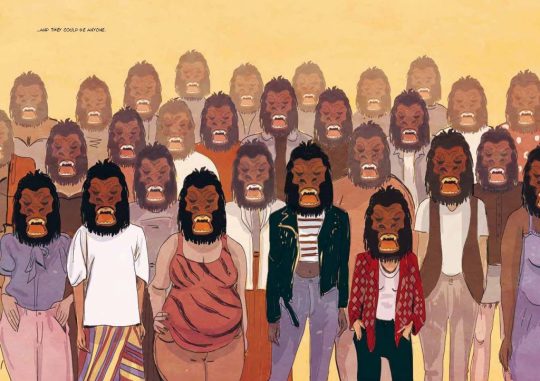
Feminist artist Barbara Kruger
Barbara Kruger, a prominent contemporary American artist born on January 26, 1945, in Newark, NJ, is celebrated for her bold and incisive cultural critique. Using a striking palette of red, white, and black, along with the Futura Bold Oblique font inspired by Constructivist Alexander Rodchenko, Kruger explores consumerism through a feminist lens with jarring sophistication. Employing short yet impactful phrases like "Thinking of You" (1999-2000) and "I shop therefore I am" (1987), she delivers pointed criticisms. Kruger, influenced by her studies under Diane Arbus and Marvin Israel, articulates, "I work with pictures and words because they have the ability to determine who we are, what we want to be, and what we become." Similar to multimedia artist Jenny Holzer, Kruger utilizes language across various mediums, including prints, T-shirts, posters, photographs, electronic signs, and billboards, leaving an indelible mark on contemporary art. Her influential legacy extends to a generation of artists, including Shepard Fairey and Lorna Simpson, as she continues to challenge societal norms through the potent combination of visuals and language.
Untitled (Your Body is a Battleground) is a seminal 1989 silkscreen portrait by Barbara Kruger, a renowned artist, feminist, and activist. Originally created for the Women's March on Washington to protest anti-abortion laws undermining Roe v. Wade, the artwork remains relevant, addressing contemporary gender inequality issues. Kruger combines mid-century images with bold Futura Bold Oblique titles on red panels, utilizing a determined language to emphasize reproductive rights as a societal battleground.
Kruger's artistic journey, marked by mature themes in black and white, involves dissecting and layering images with provocative text. The intersected face in the poster, gazing resolutely, represents the stereotypical societal view of women as objects of beauty. The composition initially suggests a division between pro-choice and pro-life perspectives, yet the caption "Your body is a battleground" transcends political battles, highlighting the ongoing feminist struggle against objectification.
The dichotomy in the image's positive and negative sides mirrors the tensions between women's rights and patriarchal control, challenging viewers to remain vigilant. The artwork compels audiences to confront the complex issues women face, with Kruger urging society to rethink stereotypes and consumption habits. The piece serves as a poignant form of protest, prompting reflection on women's rights, patriarchy, and societal expectations.
Kruger's insightful commentary extends beyond the visual, with her stating that the artwork explores the blurred lines between public and private in a seemingly shock-proof yet secretive society. The artist acknowledges the challenges women encounter in a society fixated on physical attributes, prompting contemplation on self-image and appearance.
In essence, Untitled (Your Body is a Battleground) transcends its initial political context, offering a powerful and enduring critique of societal norms, gender inequality, and the ongoing struggle for women's autonomy and self-perception. The artwork, with its bold visual language and thought-provoking captions, encapsulates Kruger's commitment to addressing profound societal issues through her artistic lens.

Reference list
artnet (2022). Barbara Kruger. [online] Artnet.com. Available at: https://www.artnet.com/artists/barbara-kruger/ [Accessed 18 December 2023].
Public Delivery (2020). Barbara Kruger - Your body is a battleground. [online] Public Delivery. Available at: https://publicdelivery.org/barbara-kruger-battleground/ [Accessed 18 December 2023].
The Art Story (2017). Feminist Art Movement Overview. [online] The Art Story. Available at: https://www.theartstory.org/movement/feminist-art/ [Accessed 18 December 2023].
#art criticism#task 3#feminist art#female artist#Barbara Kruger#artwork called your body is a battleground
0 notes